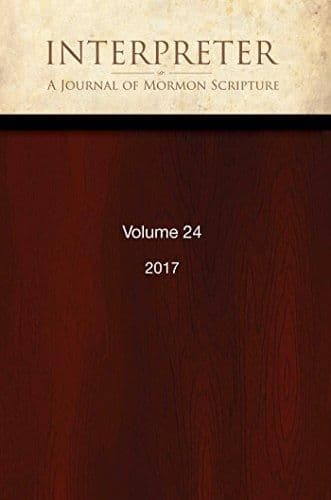Journal
“The Messiah Will Set Himself Again”: Jacob’s Use of Isaiah 11:11 in 2 Nephi 6:14 and Jacob 6:2

Title
“The Messiah Will Set Himself Again”: Jacob’s Use of Isaiah 11:11 in 2 Nephi 6:14 and Jacob 6:2
Publication Type
Journal Article
Year of Publication
2021
Authors
Bowen, Matthew L. (Primary)
Journal
Interpreter: A Journal of Latter-day Saint Faith and Scholarship
Pagination
287-306
Volume
44
Abstract
In sermons and writings, Jacob twice quotes the prophecy of Isaiah 11:11 (“the Lord [ʾădōnāy] shall set his hand again [yôsı̂p] the second time to gather the remnant of his people”). In 2 Nephi 6:14 and Jacob 6:2, Jacob uses Isaiah 11:11 as a lens through which he interprets much lengthier prophetic texts that detail the restoration, redemption, and gathering of Israel: namely, Isaiah 49:22–52:2 and Zenos’s Allegory of the Olive Trees (Jacob 5). In using Isaiah 11:11 in 2 Nephi 6:14, Jacob, consistent with the teaching of his father Lehi (2 Nephi 2:6), identifies ʾădōnāy (“the Lord”) in Isaiah 11:11 as “the Messiah” and the one who will “set himself again the second time to recover” his people (both Israel and the righteous Gentiles who “believe in him”) and “manifest himself unto them in great glory.” This recovery and restoration will be so thoroughgoing as to include the resurrection of the dead (see 2 Nephi 9:1–2, 12–13). In Jacob 6:2, Jacob equates the image of the Lord “set[ting] his hand again [yôsı̂p] the second time to recover his people” (Isaiah 11:11) to the Lord of the vineyard’s “labor[ing] in” and “nourish[ing] again” the vineyard to “bring forth again” (cf. Hebrew yôsı̂p) the natural fruit (Jacob 5:29–33, 51–77) into the vineyard. All of this suggests that Jacob saw Isaiah 49:22–52:2 and Zenos’s allegory (Jacob 5) as telling essentially the same story. For Jacob, the prophetic declaration of Isaiah 11:11 concisely summed up this story, describing divine initiative and iterative action to “recover” or gather Israel in terms of the verb yôsı̂p. Jacob, foresaw this the divine action as being accomplished through the “servant” and “servants” in Isaiah 49–52, “servants” analogous to those described by Zenos in his allegory. For Jacob, the idiomatic use of yôsı̂p in Isaiah 11:11 as he quotes it in 2 Nephi 6:14 and Jacob 6:2 and as repeated throughout Zenos’s allegory (Jacob 5) reinforces the patriarch Joseph’s statement preserved in 2 Nephi 3 that this figure would be a “Joseph” (yôsēp).
Subject Keywords
Bibliographic Citation
Terms of use
Items in the BMC Archive are made publicly available for non-commercial, private use. Inclusion within the BMC Archive does not imply endorsement. Items do not represent the official views of The Church of Jesus Christ of Latter-day Saints or of Book of Mormon Central.